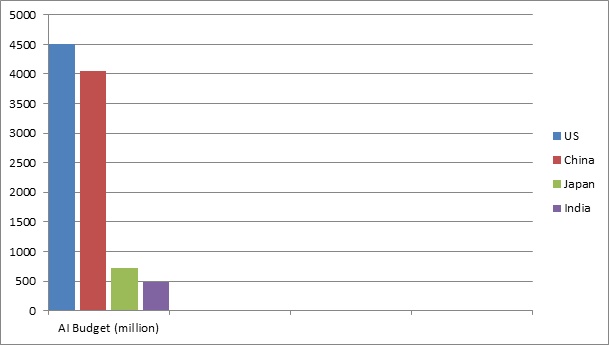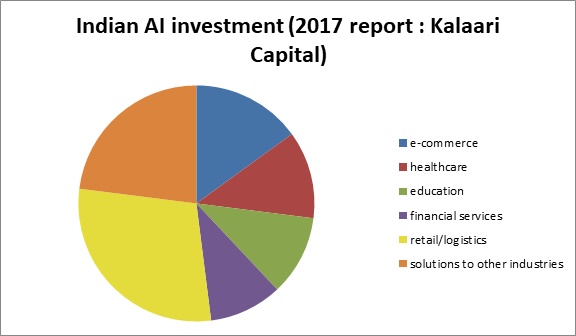Artificial Intelligence is catching the IT industry at an unbelievable speed. To cope up with the growing speed, developed and underdeveloped, all countries are investing at their maximum strength. But where does India stand? And what should India do? Author has discussed the current scenario in length to present a clear picture.
Marvin Minsky understood Artificial Intelligence (AI) as the science of making machines, do things that would require intelligence, if done by men. AI today has evolved from being shunned completely, to being respectable, even if yet controversial. The skepticism is rooted in the enormous gap between what computers and software are built to do, and the range of skills a human possesses. However, over time, many have tried to include AI in every field of development, engineering, IT, banking, or education. The focus has been on making AI with undisputable human features in its human faculty for language, and its ability to read out stories, remember facts, and answer questions based on the facts, etc. This would lead to enabling the computer to observe patterns and make changes to protocol without the user having to tell it to.
India, due to its slightly late realization of AI, is more pronouncing of its technological handicap. Research showed to reach the same level as Japan, it would need expenditure beyond its annual research and development budget. While US companies allocate up to 15% of their sales to research and development, based on Finance Minister, Arun Jaitley’s speech at the Annual Budget on February 1, the National Programme on AI, including Research and Development, spearheaded by NITI Aayog, would have its budget doubled up to Rs. 3073 crore ($477 million), which is still only 0.01% of the US budget, which stands at over $4 billion. This is followed close behind by China, and Japan far behind at $720 million.
A major advantage of Indian companies are their quality computer personnel, which are being lost to technologically superior competitors with better research facilities, working conditions and often higher remuneration. US and China public sectors aggressively invest in AI, and are expected to dramatically improve productivity and accelerate innovation. Quartz India says that between 2014 and 2017, AI startups in India raised less than $100 million. There are barely any new Indian tech companies that are research oriented, and that aren’t facing a severe lack of data and manage to find the right talent and skills.
In the context of India,
• the areas of focus that would be primarily beneficial to the country would be healthcare and agriculture. Educational institutions have also started incorporating AI and machine learning in their curricula.
• India’s wide spectrum of languages could lead to a large success in translation- oriented AI applications.
• However this sector is overshadowed by American firms like Accenture, Microsoft and Adobe.
• Due to the lack of Indian dedication to the field, Karthik Hosanagar stated that he believed the odds were higher in favor of India becoming a larger consumer than producer in the AI market. This could perhaps owe to the shortage of talent within the Indian context, and reliance of these companies on service providers for training, integration and deployment.
• Yet, companies like Infosys, Tata Consultancy Services, Wipro have their own AI platforms that help accelerate performance and progress within the companies.
• By 2021, it is expected that India will possibly lose 640,000 low skilled positions due to AI automation.
A discussion paper released by NITI Aayog, titled National Strategy for Artificial Intelligence, introduces the idea of India as the AI “garage for the emerging and developing economies” with the focus on the five main sectors of healthcare, agriculture, education, smart cities and infrastructure and smart mobility and transportation. It requires a network of infrastructure including a testing facility, and six centres focusing on research in generating AI technology such as robotics, autonomous trucks and advanced financial technology.
A study titled “Global economic impacts associated with artificial intelligence”, by the use of prior technological advancements, has predicted the potential economic outcome of AI to be between 1.49 trillion USD and 2.95 trillion USD through 2025.
The author, Jai Thomas, is an IT Evangelist at DailyHunt.
















